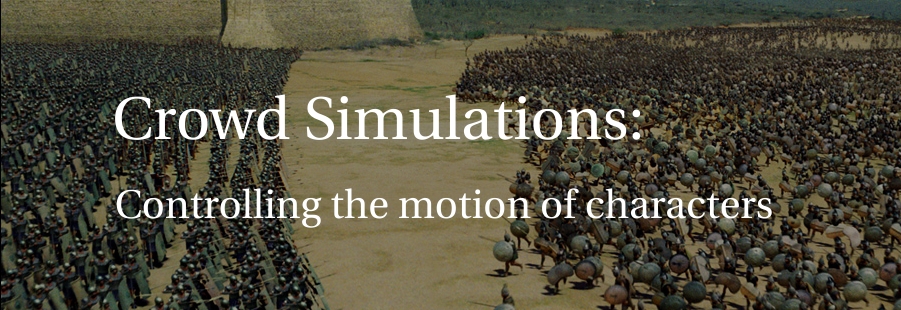
Skeletal Deformation
Skeletal deformation is not in itself a single solution for editing the motion of characters, but it provides a useful addition to approaches, such as, motion blending. This technique was used in the crowd system created for Troy. The motion capture data for Troy was taken from actors performing on flat surfaces, but in order to create a realistic look the characters had to react to the undulating terrain. In order to achieve this, The Moving Picture company created a procedural skeleton deforming tool, which could, for example, make a skeleton lean forwards, and take small steps if it sensed it was walking up an incline. These deformers were applied automatically through the artificial intelligence part of the character sensing a change in the terrain.
Skeletal deformation works much like a freeform deformation (FFD) of geometry. The nature of the coordinate space that is used to define relative skeleton coordinates may be thought of as a network of polygons that form a mesh. Each polygon has a relative coordinate range of 0 to 1 along each axis. A polyline representing the joint segment is then create and the verticies mapped to it. The polyline is deformed by the mesh displacement and then the vertices are repositioned. Any segment of the skeleton whose coordinates are within the mesh will take on the overall distortion exhibited by the coordinate space.
